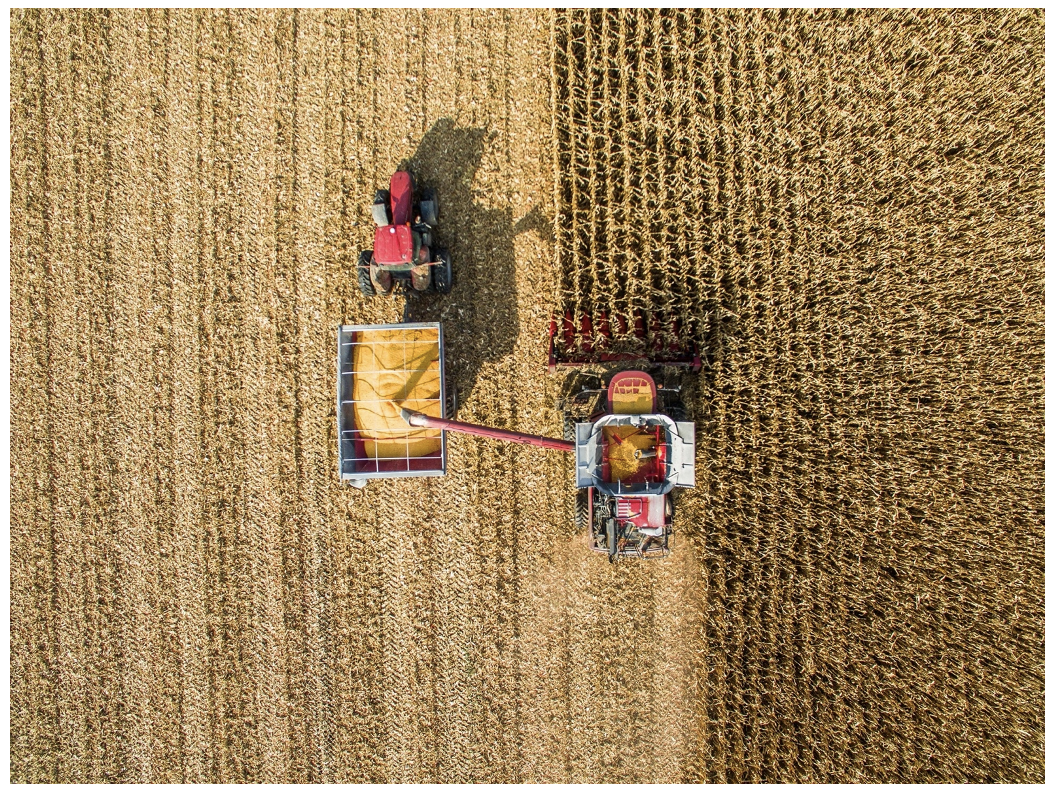- Late last year, we were keeping a close eye on two risks: La Niña and the fertilizer crisis.
- La Niña appears less of a risk now, but we’ve seen production estimates slashed for South America.
- The fertilizer crisis has not disappeared, so could still have a negative impact on yields.
Nixal’s Forecast
Our price forecast for 2021/22 (Sep/Oct) Chicago corn remains unchanged in a range of 4.5 to 5 USD/bu with an upside bias. The average price since the start of the new crop is running at 5.59 USD/bu.
Nixal’s Market Commentary
It was a negative week for corn and wheat in all geographies after the January WASDE showed higher ending stocks for corn and wheat, both in the US and globally.
US corn ending stocks were increased by 47m bu thanks to slightly higher acreage. Ending stocks are at 10.4% stock-to-use versus the 10.1% stated in the December WASDE.
Global corn stocks were lowered by 2.5m tonnes as production was reduced by 2m tonnes. Besides the upward revision to US production, Brazilian, Argentinian, and European production were lowered by 3m tonnes, 500k tonnes and 400k tonnes respectively.
The Chinese WASDE was also published last Wednesday, and it lowered local corn demand by 3m tonnes, adding the same to ending stocks.
In Brazil, Agroconsult lowered its first corn crop production forecast by 4m tonnes to 24.5m tonnes, leaving acreage unchanged but lowering yields due to dry weather. Total corn production was put at 119.4m tonnes.
Conab also reduced its corn production forecast in Brazil to 112.9m tonnes, down 4.3m tonnes from its previous estimate, and 2.1m tonnes below that of the January WASDE.

On the wheat side, losses were bigger with the WASDE increasing US ending stocks by 30m bu due to lower local and export demand. Ending stocks now sit at 628m bu, up from 598m bu before.
World wheat ending stocks were increased by almost 2m tonnes, most of which came from lower demand as changes in their production estimate were immaterial.
The IGC also increased its global wheat production forecast by 4m tonnes.
Besides the bearish January WASDE, good weather is on the cards, which has pressured prices and attracted tender activity.
Despite the correction in wheat, there’s around 9m tonnes of stock destruction globally for the second year running as 2020/21 also saw a stock draw. In corn, however, we’re seeing an 11m tonne stock build after two years of drawing down.
This should mean wheat prices trade higher again after the correction of last week, while corn prices don’t have the same tightness in the market.
On top of this, tensions between Russia and the US and Europe around Ukraine continue and are worth paying attention to as Ukraine is a large producer of both corn and wheat. If this supply is stuck in the middle of a conflict, it could have a significant impact on prices as logistics could be disrupted.
Before the end of 2021, we were following up on two risks: La Niña impacting South American crops and high natural gas prices resulting in less usage of fertilizer. The risk of La Niña appears to be less high now, but we have already seen cuts to corn production forecasts both in Argentina and Brazil. The second corn crop in Brazil is the largest one and can still offset the losses expected in the first corn crop.
The fertilizer crisis has not disappeared as natural gas continues to be expensive and fertilizer supply is limited due to lower production. This could still have a negative impact on yields.
Overall, we think corn has some downside risk due to more comfortable supply, but nothing big as we’re coming off the back of two years of very tight supply. The correction in wheat last week should have been enough.
Other Insights That May Be of Interest…
The Future of the Wheat Industry
Wheat Production Alongside the Climate Drive













